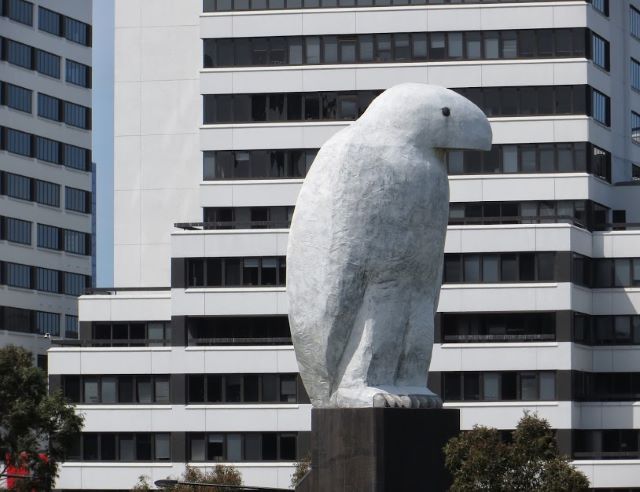
Back to the city?
On Friday 6th May, I’m leading a walk around a small area of Docklands that is dense with history – a place that has been un-made, made and re-made.
It’s part of the Jane’s Walk weekend – a global movement of free, citizen led walks that honour the memory of urbanist Jane Jacobs. The walks share her vital interest in cities and what makes them work – or not. There’s a lot of discussion about the future of the city at present, and this walk will be conducted with the questioning mind that Jane Jacobs so encouraged.
Jane Jacobs described herself as a ‘foot person’, and this post is written from a walker’s perspective.
I’ve been writing about Port places since 2013. In August that year, an article in the Age1 brought the news that the Eagle, the Bruce Armstrong sculpture in Docklands, was to be moved. Then planning minister Matthew Guy told 3AW that ‘Bunjil will have to find a new nest’2.
The move was necessitated by Lend Lease’s proposed development of the Batman’s Hill precinct of Docklands. The news sent me scurrying to Docklands to look at the sculpture with greater attention. I wrote a short piece about it. There was some public discussion about where the sculpture might be moved to, the MCG was even discussed, but in the end it didn’t move very far – just some 12 metres away in its Docklands home on the Wurundjeri Way median strip.
In the autumn of 2022, I returned and was struck by the extent of change over that period.
This is not a sculpture that is easy, or safe, to see from any vantage point at ground level. The Eagle is located on a plinth within the road reservation of Wurundjeri Way, explicitly not a place for pedestrians. Wurundjeri Way was constructed in 1999 as part of the Docklands redevelopment. It provides for through traffic but it soon became evident that it created a significant barrier between the Melbourne CBD and the emerging Docklands.
Lend Lease’s proposal addressed the issue by decking over a section of Wurundjeri Way and creating that connection at the Collins St level. A new public square, Collins Square, has been created above the roadway.
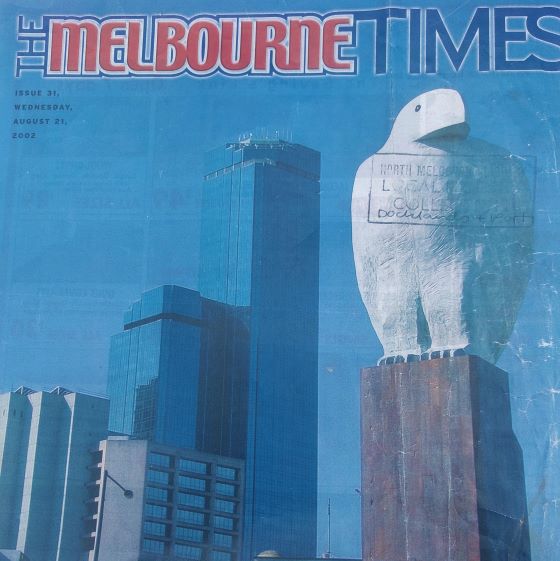
Bruce Armstrong created The Eagle in 2002 as part of Docklands urban art programme. It is as high as a 7 storey building. and the plinth is said to weigh 20 tonnes. Developers were required to spend 1% of the value of their development on public art. At the time, the Eagle surveyed the emerging Docklands scene from its 23 metre vantage point.
Gravely.
A condition of the planning permit for Lend Lease’s Melbourne Quarter development was to create a new connection between Flinders St and Collins St. This was achieved with the Wurundjeri Stairs which run up the eastern (CBD) side of the development alongside Wurundjeri Way.
There are many stairs to climb and landings provide a breathing space for the less than fit. The stair has quite a high safety barrier, (Wurundjeri Way is below) so the eagle disappears from view as you ascend.
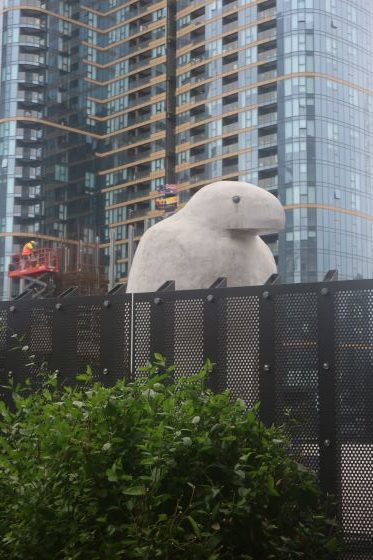
At the top of the stairs, on Collins Square, a viewing place has been created from which to view the sculpture.
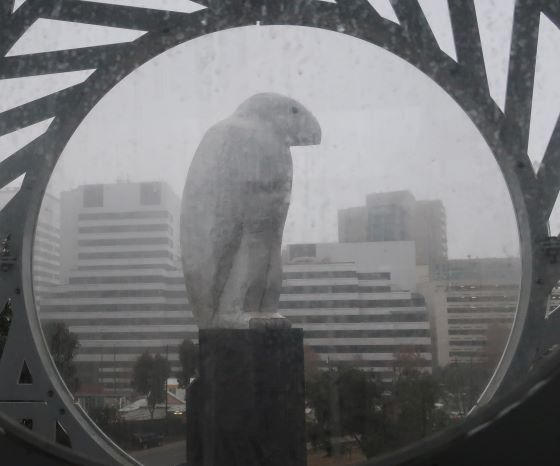
The Eagle has been tamed, domesticated, surrounded.
When the Docklands public art scheme was created, artists interpreted the culture of Melbourne’s first peoples: the Eel Bridge and Reed Vessel are two examples. Armstrong’s Eagle references Bunjil, the creator spirit of the Kulin Nation. Twenty years later, in 2022, this would be unlikely to happen in the same way.
The Australian Indigenous Design Charter sets out principles and approaches to the representation of Indigenous culture in design.
The first principle of the Charter is to ensure that Indigenous representation creation in design practice is Indigenous led.
However, the charter discourages avoidance of Aboriginal culture in design. ‘Avoidance by designers results in a lack of visibility which impacts on the reconciliation process and the progressive development of an ‘Australian style’ and an historically authentic national identity. The AIDC discourages avoidance and encourages designers to work on projects requiring Indigenous representation but only if they are prepared to respect appropriate practice methods as outlined in this Charter.’3
The city context changes around the Eagle. Its steady gaze provides a point of continuity.
This week a public hearing of the Yoorrook Justice Commission began, the first formal truth-telling process into injustices experienced by First Peoples in Victoria.
References
1 Jason Dowling No room for Bunjil in Docklands Plan, The Age, 2 August 2013
2 Cynthia Singh Bunjil set to fly The City Journal 10 August 2013
3 Australian Indigenous Design Charter: Protocols for sharing Indigenous knowledge in communication design practice Indigenous Architecture and Design Victoria (IADV), Design Institute of Australia (DIA), Deakin University – Institute of Koorie Education (IKE), School of Communication and Creative Arts (SCCA)


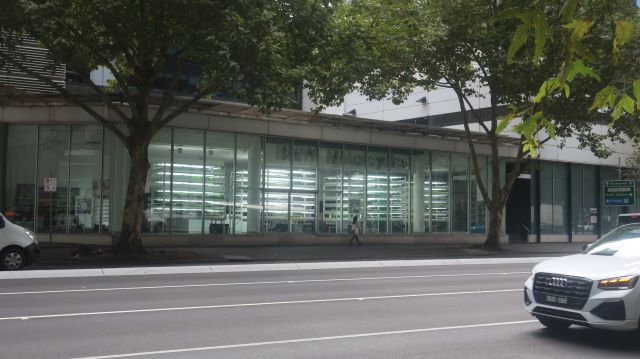
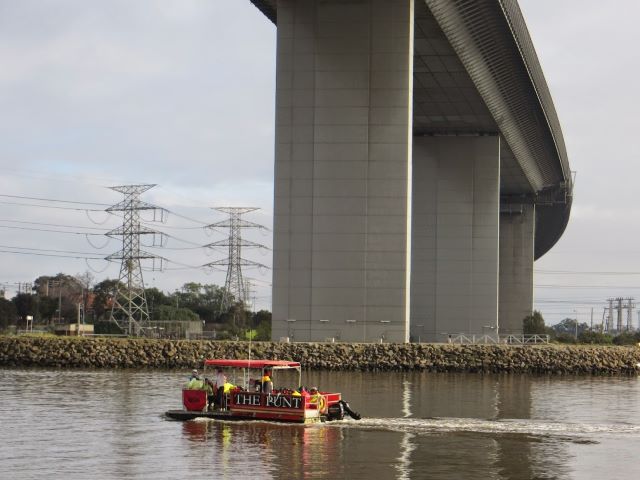
Leave a Reply